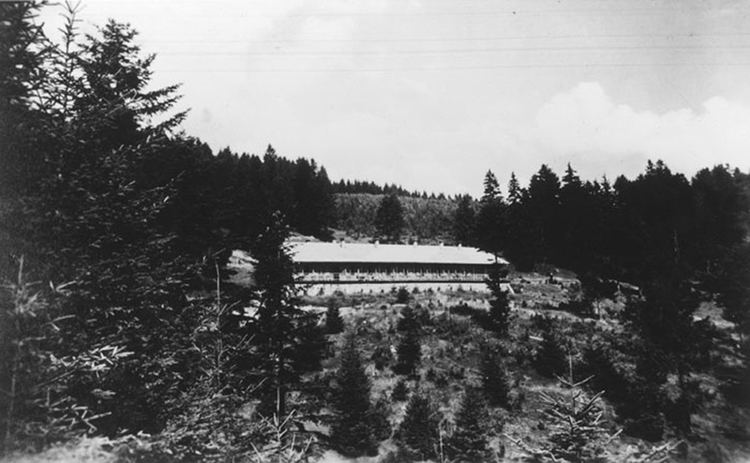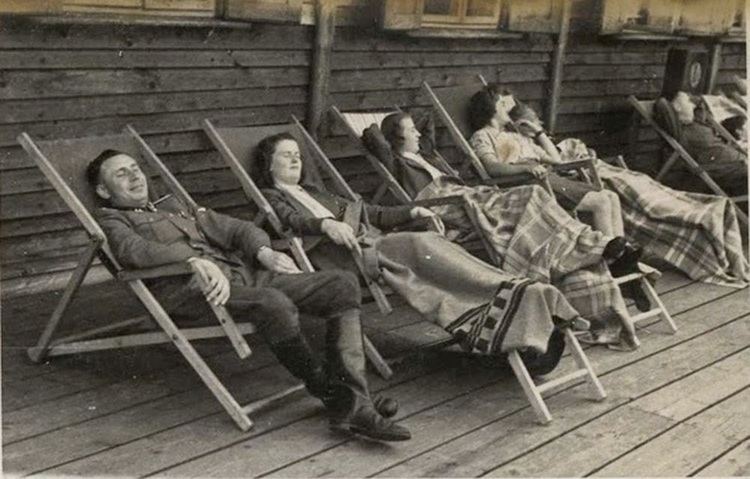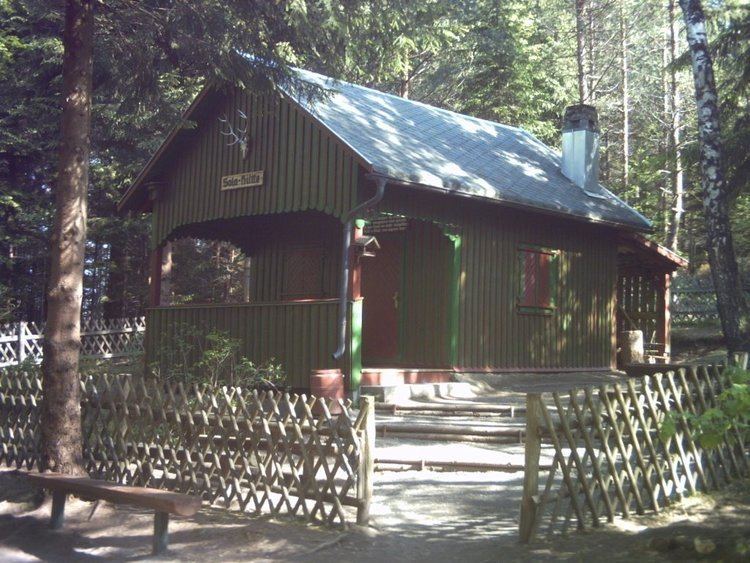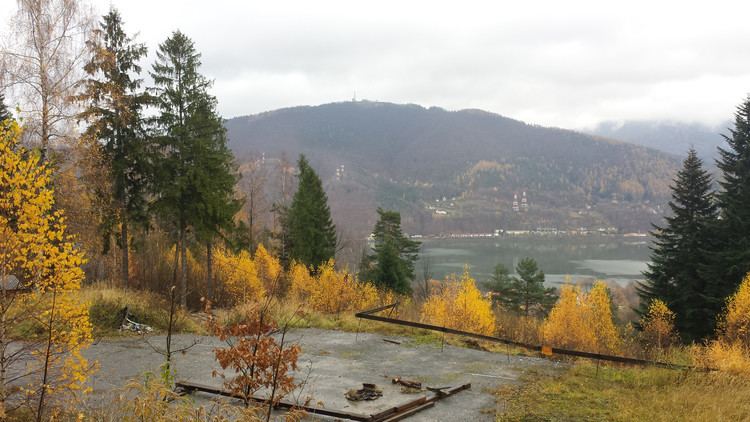 | ||
Solahütte (a.k.a. Solehütte, Soletal, SS-Hütte Soletal, or SS Hütte Porabka) was a little-known resort for the Nazi German guards, administrators, and auxiliary personnel of the Auschwitz/Birkenau/Buna facilities during the Holocaust in occupied Poland. Solahütte can be considered a tiny subcamp of Auschwitz because Auschwitz prisoners, overseen by Franz Hössler, constructed the rustic getaway facility, and a crew of detainees did ongoing grounds-keeping and cleanup work there also. Postcards of the era sent by German staff sometimes bore the resort hamlet's mysterious pre-printed return address "SS Hütte Soletal" but otherwise the place remained largely unknown until 2007, when the Höcker Album of vintage Auschwitz photographs was donated to the United States Holocaust Memorial Museum which then released images online for study.

Wartime snapshots made at Solahütte are somewhat jarring because of the lightheartedness of the people pictured: some of history's most infamous war criminals are shown cheerily singing along to accordion music, loafing on deckchairs, or giggling over desserts with female Nazi staff of the Helferinnen or Aufseherinnen. Among the SS Officers photographed at Solahütte were Oswald Pohl (executed through the Nuremberg Tribunal), Rudolf Höss (executed through the Supreme National Tribunal of Poland), and Josef Mengele (nicknamed the "Angel of Death"). The latter was almost never seen photographed in his SS uniform with Auschwitz colleagues until the Solahütte snapshots and a select few other images became known.

Solahütte is around 18 miles by car from Auschwitz. The main lodge building was demolished in 2011, but various side buildings remain, including the cabin used by Auschwitz commandant Rudolf Hoess. The site is located near the bends in the Soła river where engineers in 1935 finished a heavy dam which created the scenic Międzybrodzkie reservoir lake. Sola and Sole were Germanic approximations of the Polish Soła. Hütte is German for hut. Hence the German name "Sola hut"—even though the "hut" was actually a motel-sized building with a full-length sun-deck porch along with numerous smaller campus buildings. Activities included hunting, hiking, sunbathing, and excursions to the nearby lake and peaks. Villages of Porąbka and Międzybrodzie Żywieckie are close by—along with the Żar glide-airstrip and the Żar peak with its funicular incline-tram. The region was already popular with tourists. Far from Germany and deep in the potentially-hostile occupied Polish territory, the SS guards and the female typists and clerks of the extermination camp had few nearby safe vacation options other than going (usually by the charter-busload) "off to the Sola Hut".

In the late 1960s, the Polish Communist Party rebuilt and greatly expanded existing facilities into an elite resort called HPR-Kozubnik Porąbka (pl) with dance halls and bars plus a restaurant, indoor pool, small cinema, sauna, and a multilevel hotel for key officials. Top mining and metals-industry planners and high-ranking official visitors including the son of Leonid Brezhnev stayed there. However, after the fall of Communism in Poland, the resort became a rusty ghost town visited mostly by looters, paintballers, and urban explorers poking around the ruins.

Guests of Solahütte resort featured in the recently documented Höcker Album of memorabilia owned by Karl-Friedrich Höcker include: Josef Mengele, Richard Baer (Nazi), Aufseherin Alice Orlowski, Elisabeth Volkenrath, Herta Ehlert, Hildegard Lächert, Therese Brandl and Luise Danz.

In Popular Culture

The critically acclaimed novel "The Constant Soldier" by William Ryan is inspired by the photographs of the Solahütte guest-house.
